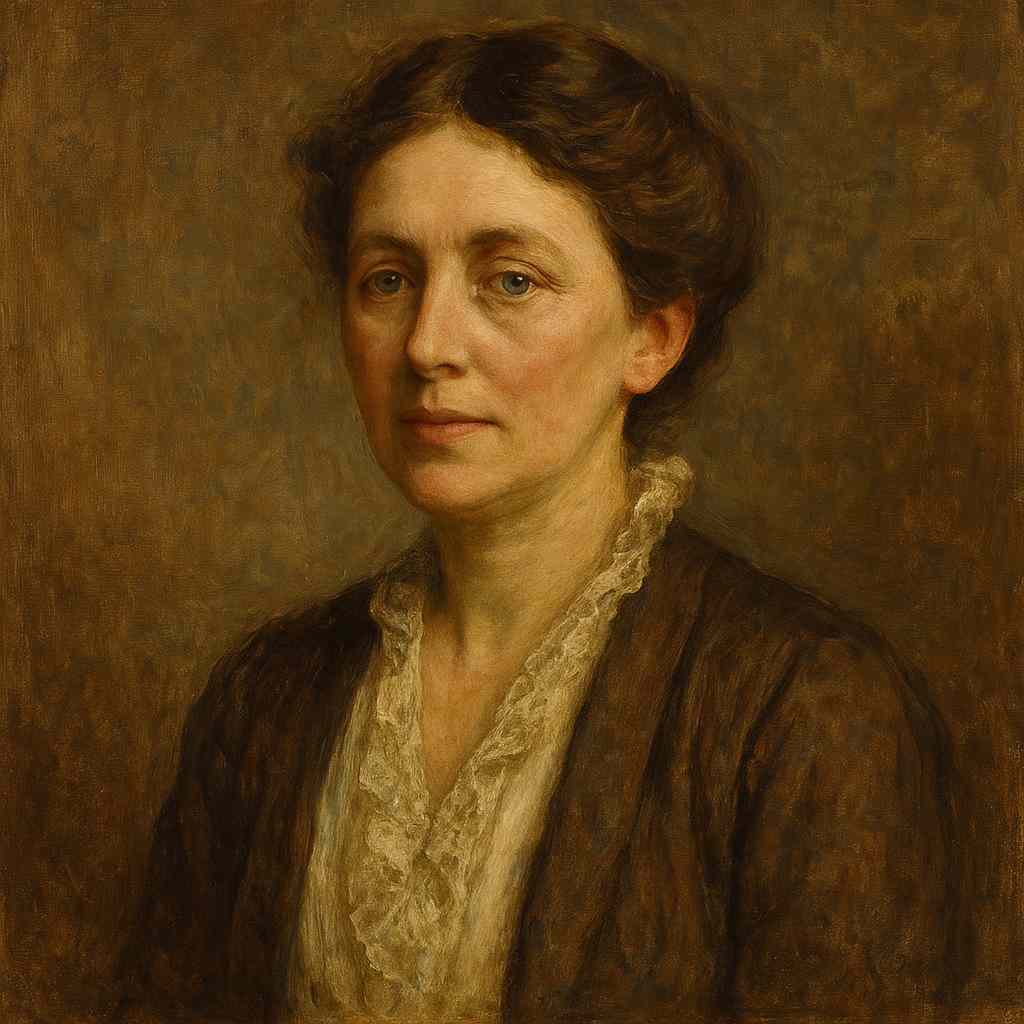Love Me at Last
Alice Corbin
1881 to 1949

Love me at last, or if you will not,
Leave me;
Hard words could never, as these half-words,
Grieve me:
Love me at last—or leave me.
Love me at last, or let the last word uttered
Be but your own;
Love me, or leave me—as a cloud, a vapor,
Or a bird flown.
Love me at last—I am but sliding water
Over a stone.
Alice Corbin's Love Me at Last
Alice Corbin’s Love Me at Last is a compact, yet intense exploration of unrequited love and the speaker’s yearning for resolution. Through strikingly sparse language, Corbin captures the agony of indecision and emotional liminality, structuring her plea in a repetitive, almost incantatory rhythm that underlines the speaker's urgency and vulnerability. Each stanza builds upon the central motif of longing for commitment or closure, utilizing metaphor, sound, and rhythm to heighten the emotional stakes.
Analysis of Structure and Form
The poem consists of three stanzas, each following a similar syntactic structure and employing an AABAB rhyme scheme that mirrors the poem’s alternating hope and resignation. The repetitive invocation—"Love me at last"—functions almost as a refrain, underscoring the speaker’s entreaty while highlighting her emotional exhaustion. This cyclical structure enhances the tension, as the speaker vacillates between demanding love and being prepared for abandonment.
First Stanza: Half-Hearted Words and Deep Wounds
"Love me at last, or if you will not,
Leave me;
Hard words could never, as these half-words,
Grieve me:
Love me at last—or leave me."
In the opening stanza, the speaker presents a straightforward plea: to be fully loved or left entirely. Corbin’s speaker expresses a preference for the clarity of “hard words” over “half-words,” revealing a complex inner pain—she suffers more from the ambiguity of her lover's emotions than from outright rejection. Here, “half-words” suggest ambiguity or reluctance, perhaps implying that her lover has left her with inconclusive expressions of affection, causing more hurt than if they had spoken with harsh honesty. The repetition of "Love me at last" intensifies the speaker's longing, emphasizing that she has waited long enough for a resolution.
Second Stanza: The Last Word and the Impermanence of Love
"Love me at last, or let the last word uttered
Be but your own;
Love me, or leave me—as a cloud, a vapor,
Or a bird flown."
In the second stanza, the speaker pushes her plea further, asking for the “last word” to be decisive and wholly owned by the lover. Corbin draws on a series of ephemeral images—“a cloud, a vapor, / Or a bird flown”—to capture the fleeting nature of uncommitted love. These metaphors suggest something that is both transient and uncontrollable, as though the speaker’s connection to the lover has always been as insubstantial as air, easily dispersed. The image of the “bird flown” may represent an ultimate freedom or escape, hinting that the lover’s presence has been conditional, never truly grounded in commitment. This line speaks to the speaker’s fear of their relationship dissolving without resolution, a tension between her desire for permanence and the lover’s elusive nature.
Third Stanza: Resigned Self-Image and the Element of Time
"Love me at last—I am but sliding water
Over a stone."
The poem concludes with an image that conveys both resignation and ephemerality. By likening herself to “sliding water / Over a stone,” the speaker expresses a sense of her own impermanence within this relationship. Water sliding over stone evokes the inevitability of erosion—a slow, almost imperceptible wearing away over time. This image might signify that, without her lover’s commitment, her love will eventually erode, leaving her as unchanged and impassive as stone. At the same time, it suggests the futility of attempting to grasp or hold onto something that is not reciprocated or grounded, as water cannot be confined by the stone it flows over.
Themes and Conclusion
Corbin’s Love Me at Last is thematically centered on the desire for clarity in relationships, especially when prolonged uncertainty causes emotional suffering. The speaker's ultimatum—“Love me or leave me”—is not simply a demand for affection but a plea for emotional honesty. Through her precise use of metaphor and controlled form, Corbin captures the speaker’s weary persistence, her vulnerability, and her readiness to move on if her love remains unreciprocated. The poem suggests that a love unfulfilled and ambiguous may be more tormenting than outright rejection. Ultimately, the speaker’s self-comparison to “sliding water” reflects a quiet acceptance; if her lover’s affection remains elusive, she will, like water, continue moving forward, eroding away her attachment until she can leave the stone of her lover behind.
In this way, Corbin’s poem not only illustrates the painful nuances of waiting for love but also subtly portrays the speaker's journey toward emotional self-preservation, making Love Me at Last a delicate and powerful examination of love, loss, and personal resilience.
This text was generated by AI and is for reference only. Learn more
Want to join the discussion? Reopen or create a unique username to comment. No personal details required!



Comments
No comments yet. Be the first to comment!